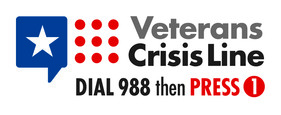
(Photo: cookie_studio)
A recent study conducted by the American Institutes for Research, a private, nonpartisan research organization, offers the first in-depth analysis of the impact of the Post-9/11 G.I. Bill on Veterans’ college enrollment, degree completion and earnings since its implementation in 2008.
The Post-9/11 G.I. Bill, PGIB, extends financial aid to Veterans who served after September 10, 2001, and their families, covering the cost of tuition at public institutions within their state of residency. Over the course of a decade, approximately $100 billion was allocated to the program, benefiting over 2.7 million eligible Veterans. However, due to fragmented data within federal departments, an in-depth analysis of its impact was lacking until now.
This research not only provides valuable insights into the efficacy of the Post-9/11 G.I. Bill but also sets a precedent for evidence-based policymaking and program improvement.
Over seven years, the American Institutes for Research, or AIR, Census Bureau, and the VA’s National Center for Veterans Analysis & Statistics, or NCVAS, supported by Arnold Ventures, provided insights from multiple datasets, shedding light on PGIB usage, degree completion, labor market participation, and earnings. This collaborative effort enabled an understanding of Veterans’ educational and economic outcomes.
The report found that approximately 54% of eligible enlisted Veterans used PGIB benefits for higher education between 2009 and 2019. When factoring in beneficiaries who transferred their benefits or used them outside higher education, the rate increased to 62%.
Veterans exhibited a significantly higher college completion rate compared to financially independent students, with about 47% achieving an associate, bachelor’s, or graduate degrees within six years, doubling the rate of similar independent students.
Additionally, the analysis reported Women Veterans surpassed Male Veterans in using PGIB benefits for higher education and completed degree requirements. However, Women Veterans earned less in the labor market despite possessing the same qualifications.
Veterans from historically underrepresented racial and ethnic groups demonstrated a higher increase of PGIB utilization for higher education but experienced lower degree completion rates within six years. Earnings for Black Veterans were notably lower compared to those of other Veterans, while American Indian/Alaska Native Veterans also experienced reduced earnings. These groups exhibited narrower earnings disparities within the Veteran population compared to the general population.
Academic preparedness at enlistment, as indicated by Armed Forces Qualification Test (AFQT) scores, correlated with PGIB benefit usage, degree completion, and earnings, with higher scores predicting higher utilization rates, completion rates, and earnings.
Moving forward, the findings are expected to inform policy decisions designed to improve support for student Veterans and promote access to educational opportunities. Moreover, ongoing analyses will explore Veterans’ educational pursuits, outcomes at specific institutions, and disparities among demographic groups, ensuring continued refinement of support services and policies tailored to Veterans’ needs. Research such as this and ongoing data-driven analysis can help to improve educational fairness and give Veterans more support as they adjust to civilian life.












